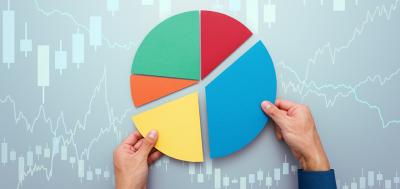5 Surprising Facts About Insider Trading

In the Showtime television series “Billions,” the ambitious U.S. attorney Chuck Rhoades, played by Paul Giamatti, is certain that a fictional hedge fund manager Bobby Axelrod, played by actor Damien Lewis, is guilty of insider trading.
“What have I done wrong? Really? Except make money. Succeed,” Axelrod says in his defense in an episode.
There isn’t a clear hero and villain in the television drama, which began airing its second season earlier this year. And it’s not clear how long Axelrod can elude Rhoades, if he is guilty.
In reality, there are many agencies and regulators, including the Financial Industry Regulatory Authority (FINRA) and the Securities and Exchange Commission (SEC), that are working behind-the-scenes every day to catch insider traders and to bring them to justice using established legal precedent.
Here are some real-life facts you may not know about insider trading:
1. Illegal vs. Legal Insider Trading
While most people hear about illegal insider trading through fictional drama and real headlines, the term “insider trading” includes both legal and illegal conduct, according to the SEC website.
The legal version occurs when corporate insiders, including officers and employees, buy and sell stock in their companies without possessing material nonpublic information at the time of their trades. These trades must be reported to the SEC, and can be looked up by any investor using the regulator’s Edgar database.
Illegal insider trading “refers generally to buying or selling a security, in breach of a fiduciary duty or other relationship of trust and confidence, while in possession of material, nonpublic information about the security,” according to the SEC.
For example, it is legal for a CEO to buy shares in her company, generally, but it would be illegal for her to do so if, say, she knew it would be announced the next day that her company was being acquired.
2. The Many Parties, From Investigation to Prosecution
While the U.S. Department of Justice and regional U.S. Attorneys’ offices carry out criminal prosecutions of individuals who violate the federal securities laws, potential insider trading is often initially uncovered by the Financial Industry Regulatory Authority (FINRA).
FINRA is responsible for overseeing and examining the more than 635,000 brokers and more than 3,900 securities firms doing business with the U.S. public. In addition, FINRA’s Office of Fraud Detection and Market Intelligence (OFDMI) is also responsible for conducting front-line insider trading surveillance for the U.S. markets.
FINRA’s OFDMI uses a highly sophisticated proprietary market surveillance system called SONAR to track unusual price or volume movements in stocks across the U.S. markets and to combine that information with news feeds that SONAR receives on a daily basis. That process produces alerts which identify trade scenarios that may indicate potential insider trading and that warrant further investigation.
Related: Catching the Bad Guys: Inside FINRA’s Fraud Surveillance and Insider Trading Groups
FINRA is a key SEC partner in the detection of insider-trading violations. Last year, OFDMI referred 435 matters regarding potential insider trading to the SEC.
3. The Origins of Prohibiting Insider Trading
Insider trading is a crime through judicial interpretation of the Securities Exchange Act of 1934. The Exchange Act was passed after the 1929 stock market crash with the intent, in part, to restore public trust in the markets.
Part of the Exchange Act prohibits “manipulative and deceptive devices” in connection with the purchase or sale of securities, including trading a security on the basis of “material” nonpublic information about it or its issuer.
Over the years, Congress has revised the law and the SEC has supplemented it with rules and regulations. However, insider trading law has primarily been developed through federal courts’ interpretation of the Exchange Act over the many decades since its formulation.
4. The Evolution of Interpretation
The courts have played a major role in defining the laws that regulate insider trading. At times, the SEC has adopted administrative rules to resolve some insider trading issues where courts have disagreed, according to the SEC website.
One legal question, for example, was whether a corporate “outsider” should be held to similar standards as that of an “insider,” such as a company director.
In 1961, a broker was accused of trading while in possession of nonpublic information he received from a company director. As part of the SEC’s administrative opinion in that case, the agency adopted the “disclose or abstain rule”: insiders and “temporary” insiders who possess material nonpublic information must disclose it before trading or abstain from trading until the information is publicly disseminated.
Later, in SEC v. Texas Gulf Sulphur Co., a federal circuit court supported the SEC’s ruling, stating that anyone who has inside information should disclose the information publicly or refrain from trading.
5. Penalties
Individuals face up to 20 years in prison for an insider trading violation, according to the SEC website. The maximum criminal fine for individuals is $5 million, and it’s $25 million for businesses. However the total penalty may be far higher, since those found guilty of insider trading are also subject to penalties for related charges and civil sanctions.
In one high-profile insider trading conviction, hedge fund manager Raj Rajaratnam, founder of Galleon Group LLC, was sentenced to 11 years in prison in 2011 and ordered to pay a total of $156.6 million in penalties, fines and forfeiture of illicit gains.



